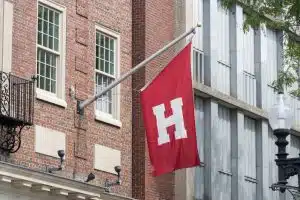Common App or Coalition App: Which Colleges Do Prefer?
Navigating the college application process often comes down to a crucial decision: opting for the Common App or the Coalition App. These platforms serve as your gateway to higher education, each with its own set of features and requirements. But how do you know which one aligns best with your academic goals? Read on to explore key differences, tips, and considerations that can influence your choice and set you on the path to college success.
Understanding the Common App
The Common App, officially known as the Common Application, is a non-profit organization that allows students to apply to many colleges and universities across the U.S. and internationally through one centralized platform.
The main feature of the Common App is its universal application form, which can be sent to any member institution. This saves students the trouble of filling out multiple forms for different colleges and universities.
But what exactly does the Common App offer beyond just a convenient application process? Let’s explore further.
The Purpose of the Common App
The primary aim of the Common Application is to simplify the process of applying to colleges. Instead of having to navigate different application systems for each school, students can apply to multiple schools simultaneously using one standardized form.
Imagine the time and effort saved by not having to fill out separate forms, and inputting the same information over and over again. The Common App streamlines this process, allowing students to focus more on their college choices and less on administrative tasks.
Another goal of the Common App is to promote accessibility. This is achieved through tools and resources designed to guide students, especially those who are first-generation or from low-income families, through the application process.
By providing a user-friendly interface and comprehensive support, the Common App ensures that all students, regardless of their background, have an equal opportunity to pursue higher education.
The Process of Applying through the Common App
Applying through the Common App entails creating an account on their website, selecting the colleges you want to apply to, filling out a single application form, and writing a personal essay.
Creating an account is a straightforward process that requires basic information such as name, contact details, and educational background. Once the account is set up, students can explore the list of member institutions and select the ones they are interested in.
When it comes to filling out the application form, the Common App provides a comprehensive set of questions that cover various aspects of a student’s academic and personal life. This includes information about extracurricular activities, honors and awards, and work experience.
The personal essay is a critical aspect of the Common App, as it gives potential students a chance to showcase their personality and skills beyond grades and test scores. The Common App also provides prompts to guide students in crafting their personal statements.
Writing a personal essay can be a daunting task, but it is also an opportunity for students to reflect on their experiences, aspirations, and values. It allows admissions officers to get a glimpse into the applicant’s character and potential contribution to the college community.
Once the application is complete, students can review and submit it electronically through the Common App platform. This ensures that the application reaches each chosen institution securely and efficiently.
In conclusion, the Common App not only simplifies the college application process but also promotes accessibility and equal opportunity. By providing a centralized platform and comprehensive resources, it empowers students to pursue their educational goals with ease and confidence.
Getting to Know the Coalition App
The Coalition Application, more commonly referred to as the Coalition App, is another centralized college application system. It was developed by a group of colleges and universities known as the Coalition for Access, Affordability, and Success, hence its name.
Similar to the Common App, the Coalition App also aims to streamline and simplify the college application process. However, it has a particular focus on assisting students who have been traditionally under-represented in higher education.
The Coalition App provides a comprehensive platform that goes beyond just the application process. It is designed to support students throughout their entire journey to higher education, starting from ninth grade onwards. This holistic approach sets it apart from other application systems.
The Mission of the Coalition App
The Coalition App’s mission is to make college education more accessible and affordable, particularly for low-income, underprivileged, and first-generation college students. It accomplishes this through its unique platform and set of tools that guide students through their journey to higher education.
One such tool is the Coalition Locker, a personalized online space where students can store important materials like documents, pictures, and letters of recommendation throughout their high school years. This feature allows students to easily access and organize their materials, making the application process more efficient and organized.
In addition to the Coalition Locker, the Coalition App also offers a Collaboration Space. This feature enables students to connect with mentors, counselors, and teachers who can provide guidance and support throughout the college application process. It fosters a collaborative environment where students can seek advice and feedback from trusted individuals.
How to Apply using the Coalition App
When applying via the Coalition App, students start by setting up an account and then selecting colleges from the member list. They then fill out a single application form, similar to the Common App.
However, what sets the Coalition App apart is its emphasis on a holistic review process. It encourages students to provide a comprehensive view of their achievements and experiences. In addition to the traditional application components, the Coalition App requires an essay that allows students to showcase their personal growth, resilience, and unique perspectives.
Furthermore, the Coalition App allows students to submit a portfolio of work. This portfolio can include artwork, research projects, and community service proof. By accepting a wide range of materials, the Coalition App provides students with an opportunity to highlight their talents and passions beyond just academic achievements.
The Coalition App recognizes that students are more than just their grades and test scores. It values diversity and seeks to create a more inclusive admissions process that considers the whole student.
Comparing the Common App and Coalition App
When it comes to college applications, two popular platforms that students often consider are the Common App and the Coalition App. While these platforms have many similarities, there are also key distinctions that students should be aware of in order to make an informed decision.
Key Differences Between the Two Platforms
One primary difference between the Common App and the Coalition App is the number of participating schools. The Common App boasts an impressive network of over 900 member institutions, making it a widely recognized and utilized platform. On the other hand, the Coalition App, although growing in popularity, currently has around 150 member schools.
This difference in the number of participating schools could potentially impact a student’s ability to apply to certain institutions, depending on their preferences and target schools.
Another significant difference between the two platforms is the approach to the application essay. The Common App provides a set of prompts for students to choose from when writing their essays. These prompts cover a wide range of topics and allow students to showcase their unique experiences and perspectives.
In contrast, the Coalition App offers students more flexibility by giving them the choice of either writing on a topic of their choice or selecting from a set of prompts provided by the platform. This difference in essay options allows students to choose the approach that best suits their personal style and storytelling abilities.
Similarities between the Common App and Coalition App
Despite their differences, both the Common App and the Coalition App share common goals and features that aim to simplify the college application process and expand access to higher education.
Firstly, both platforms are designed to make the college application process simpler and more accessible for students. They provide a user-friendly interface that guides students through each step of the application, ensuring that they do not miss any crucial information or documents. This user-friendly approach helps to demystify the application process and alleviate some of the stress that students often experience during this time.
Additionally, both the Common App and the Coalition App are committed to expanding access to higher education, particularly for under-represented students. They strive to create a level playing field by providing equal opportunities for all students, regardless of their background or circumstances. By partnering with various colleges and universities, these platforms aim to bridge the gap and make the application process more inclusive.
Furthermore, both platforms require students to provide similar information during the application process. This includes personal details, academic history, extracurricular activities, and a personal essay. By requesting this information, the Common App and the Coalition App aim to provide colleges and universities with a comprehensive understanding of each applicant’s achievements, experiences, and aspirations.
In conclusion, while the Common App and the Coalition App serve the same purpose of simplifying the college application process, they have distinct differences that students should consider. The number of participating schools and the essay options are important factors to weigh when deciding which platform to use.
Ultimately, students should choose the platform that aligns with their preferences and goals, ensuring that they have the best chance of showcasing their unique qualities and gaining admission to their desired colleges or universities.
Factors Colleges Consider in Application Platforms
Different colleges might prefer one platform over the other due to various factors.
Why Some Colleges Prefer the Common App
Some colleges prefer the Common App because it has a broader membership base, creating more exposure for their institution. In addition, the Common App has a longer-standing reputation, which attracts both domestic and international students.
Furthermore, the Common App offers a wide range of features and resources that benefit both students and colleges. For instance, the platform provides a centralized application process, allowing students to apply to multiple colleges with just one application. This streamlines the application process for both the applicants and the admissions offices.
Moreover, the Common App’s user-friendly interface and intuitive design make it easy for students to navigate through the application process. The platform provides clear instructions and prompts, ensuring that applicants can submit their materials efficiently and accurately.
Additionally, the Common App offers a robust support system for students, providing assistance throughout the application process. From essay prompts to recommendation letter submissions, the platform guides students every step of the way, ensuring that they have all the necessary tools to present themselves effectively to colleges.
Reasons for Colleges’ Preference for the Coalition App
On the other hand, other institutions might prefer the Coalition App because of its focus on increasing accessibility and affordability in higher education. These schools may value the platform’s initiatives in providing specific tools for students to organize their application materials effectively.
The Coalition App’s feature of allowing students to submit a portfolio can also give these colleges a more rounded view of a student’s skills and experiences. This holistic approach to evaluating applicants can be particularly beneficial for colleges that prioritize a diverse and well-rounded student body.
Furthermore, the Coalition App emphasizes collaboration and community engagement, encouraging students to showcase their commitment to social issues and community service. This aligns with the values of many colleges that seek to admit students who are not only academically accomplished but also socially conscious and actively involved in making a positive impact.
In addition, the Coalition App offers a range of resources and support for students from underrepresented backgrounds, aiming to level the playing field in college admissions. By providing guidance and mentorship, the platform helps students overcome barriers and navigate the application process with confidence.
Moreover, the Coalition App’s emphasis on early engagement with students encourages them to start preparing for college early on, fostering a college-going culture and increasing college readiness among high school students.
In conclusion, while both the Common App and the Coalition App offer unique advantages, colleges’ preferences for one platform over the other are influenced by a variety of factors. These factors include the platform’s reputation, user-friendliness, range of features, focus on accessibility and affordability, and alignment with the college’s values and goals.
Ultimately, colleges choose the application platform that best suits their needs and helps them identify and admit a diverse and talented student body.
Making the Right Choice: Common App or Coalition App
In the end, the choice between the Common App and the Coalition App will largely come down to the individual student and the colleges they wish to apply to.
Considerations for Students in Choosing an Application Platform
Students should consider which platform their preferred colleges accept applications from. They should also consider their comfort level with each platform’s application process and the freedom allowed in their personal essay.
Moreover, students who have a significant amount of non-academic work to showcase might favor the Coalition App due to its portfolio feature.
Tips for a Successful Application Process
Regardless of which platform a student chooses, it’s crucial to begin the process early. This means researching colleges well in advance, gathering all necessary materials, and giving yourself plenty of time to write and revise your essay.
Another important tip is to stay organized throughout the process. Using the tools provided by the Common App and Coalition App, such as their application tracking and document storage features, can be tremendously helpful.
Finally, don’t be afraid to ask for help. Whether it’s from a teacher, parent, or college counselor, seeking advice can alleviate some of the stress and confusion of the college application process and ensure you submit the best application possible.








































